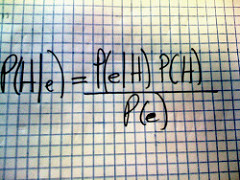Edited an hour or so after original posting to add: And any reading of the broader content would have made clear to Ehrman that Doherty addresses a wide range of ancient world views; and much later, added a longer paragraph by Ehrman demonstrating his persistent misreading of Doherty’s words.
I don’t know how to portray Bart Ehrman’s erroneous claims — even false quotations — about what Earl Doherty has written in his book, Jesus Neither God Nor Man, in words that avoid all risk of aspersions on Ehrman’s intellectual integrity. But I will try. I intend to bring them to wider attention on this blog point by point over the coming months. They need to be addressed. Unfortunately Earl Doherty himself is tied up with medical treatments on his eyes and not able to respond himself as he no doubt will when he is able.
Here is just one of these Ehrmanisms:
. . . . in Doherty’s view, Paul (and other early Christians) believed that the “Son of God had undergone a redeeming ‘blood’ sacrifice” not in this world but in a spiritual realm above it.25
Doherty’s reason for this remarkable statement involves what he calls “the ancients’ view of the universe” (was there one such view?). According to Doherty, authors who were influenced by Plato’s way of thinking and by the mythology of the ancient Near East believed that there was a heavenly realm that had its counterpart here on earth. “Genuine” reality existed, not here in this world, but in that other realm. This view of things was especially true, Doherty avers, in the mystery cults, which Doherty claims provided “the predominant form of popular religion in this period.”26 (This latter claim, by the way, is simply not true. Most religious pagans were not devotees of mystery cults.) (p. 252 of Did Jesus Exist?, my emphasis)
Ehrman continues to repeat and underscore this aspersion — that Doherty is so simplistic as to speak of a single view of the world among ancients:
To begin with, how can he claim to have uncovered “the” view of the world held by “the” ancients, a view that involved an upper world where the true reality resides and this lower world, which is a mere reflection of it? How, in fact, can we talk about “the” view of the world in antiquity? Ancient views of the world were extremely complex and varied, just as today’s views are. Would anyone claim that Appalachian snake handlers and postmodernist literary critics all have the same view of the world? Or that Primitive Baptists, high-church Episcopalians, Mormons, atheists, and pagans do? Or Jews, Muslims, and Buddhists? Or Marxists and capitalists? That all of these groups have “the” modern view of the world? To talk about “the” view of the world in any century is far too simplistic and naive.
“the” (alleged) ancient view of the world—whatever that might be . . . .
Ehrman is clear. His footnote 25 is to page 97 of Doherty’s book, Jesus Neither God Nor Man.
Now compare what Doherty actually wrote on page 97 of Jesus Neither God Nor Man: Continue reading “Bart Ehrman’s false or careless assertions and quotations concerning Earl Doherty”
Like this:
Like Loading...









